Effect of Surface Condition on the Results of Chemical Composition Measurements of Scrap Copper Alloys
Abstract
:1. Introduction
2. Mobile Spectrometers for Measuring the Content of Chemical Element in Copper Alloys
- optical emission spectroscopy with spark excitation (OES)
- X-ray fluorescence spectrometry (XRF)
- laser-induced breakdown spectroscopy (LIBS)
- appropriate accuracy of chemical composition measurement,
- repeatability of measurement results,
- ease of recalibration,
- user safety,
- short time of performing the measurement,
- resistance to atmospheric conditions,
- low sensitivity to surface quality.
Measuring the Chemical Composition of Scrap Copper Alloys
3. Review of the Surface Condition of Scrap to Be Sorted When Recycling
3.1. Specification of Samples Selected for the Study of the Effect of Roughness on the Results of Chemical Composition Measurements
- 0.
- raw material—no treatment
- 1.
- sandblasting with an abrasive
- 2.
- grinding with P120 grit waterproof sandpaper
- 3.
- grinding with P400 grit waterproof sandpaper
- 4.
- grinding with P800 grit waterproof sandpaper
- 5.
- grinding with P1200 grit waterproof sandpaper
- 6.
- polishing with diamond slurry with grit of 1 μm
3.2. Specification of Samples Selected for Testing the Effect of Thickness and Type of Paint Coating on the Measurement Results
- AP: alkyd paint—spraying on CuZnPb,
- WP: water paint—spraying on CuZnPb,
- ACP: anti-corrosion paint—brush on CuZnSn,
- OAP: oil-alkyd paint—brush on CuZnPb,
- AE: acrylic enamel—brush on CuZn,
- OPE: oil-phthalate enamel—brush on CuZnSn.
4. Assessing the Impact of Surface Condition on Spectrometer Results
4.1. Effect of Surface Roughness on the Results of Measuring the Content of Selected Chemical Elements
- an increase in the copper content measurement result using the LIBS spectrometer,
- decreasing the measurement result using the OES spectrometer,
- ambiguous variation in the XRF spectrometer measurement results.
4.2. Effect of Thickness and Type of Paint Coating on the Results of Measuring the Content of Selected Elements
5. Summary
Author Contributions
Funding
Data Availability Statement
Conflicts of Interest
References
- Li, J.; Eheliyagoda, D.; Geng, Y.; Yang, Z.; Zeng, X. Examining the influence of copper recycling on prospective resource supply and carbon emission reduction. Fundam. Res. 2022; in press. [Google Scholar] [CrossRef]
- Osawa, J. Portfolio Analysis of Clean Energy Vehicles in Japan Considering Copper Recycling. Sustainability 2023, 15, 2113. [Google Scholar] [CrossRef]
- Loibl, A.; Tercero Espinoza, L.A. Current challenges in copper recycling: Aligning insights from material flow analysis with technological research developments and industry issues in Europe and North America. Resour. Conserv. Recycl. 2021, 169, 105462. [Google Scholar] [CrossRef]
- Available online: https://www.britannica.com/science/scrap-metal (accessed on 13 January 2024).
- Bennett, B.N.; Martin, M.Z.; Leonard, D.N.; Garlea, E. Calibration curves for commercial copper and aluminum alloys using handheld laser-induced breakdown spectroscopy. Appl. Phys. B 2018, 124, 42. [Google Scholar] [CrossRef]
- Akhmetzhanov, T.F.; Labutin, T.A.; Korshunov, D.M.; Samsonov, A.A.; Popov, A.M. Determination of Ce and La in REE-rich ores using handheld LIBS and PLS regression. J. Anal. At. Spectrom. 2023, 38, 2134–2143. [Google Scholar] [CrossRef]
- Lins, S.A.; Di Francia, E.; Grassini, S.; Gigante, G.; Ridolfi, S. MA-XRF measurement for corrosion assessment on bronze artefacts. In Proceedings of the 2019 IMEKO TC-4 International Conference on Metrology for Archaeology and Cultural Heritage, Florence, Italy, 4–6 December 2019. [Google Scholar]
- Situ Applications of X Ray Fluorescence Techniques; Number 1456 in TECDOC Series; International Atomic Energy Agency: Vienna, Austria, 2005.
- Musílek, L.; Čechák, T.; Trojek, T. X-ray fluorescence in investigations of cultural relics and archaeological finds. Appl. Radiat. Isot. 2012, 70, 1193–1202. [Google Scholar] [CrossRef] [PubMed]
- Nørgaard, H.W. Portable XRF on Prehistoric Bronze Artefacts: Limitations and Use for the Detection of Bronze Age Metal Workshops. Open Archaeol. 2017, 3, 101–122. [Google Scholar] [CrossRef]
- Alberghina, M.F.; Barraco, R.; Brai, M.; Schillaci, T.; Tranchina, L. Double laser LIBS and micro-XRF spectroscopy applied to characterize materials coming from the Greek-Roman theater of Taormina. In Proceedings of the O3A: Optics for Arts, Architecture, and Archaeology II, Munich, Germany, 14–18 June 2009; Pezzati, L., Salimbeni, R., Eds.; International Society for Optics and Photonics; SPIE: St Bellingham, WA, USA, 2009; Volume 7391, p. 739107. [Google Scholar] [CrossRef]
- Brinkmann, P.; Köllner, N.; Merk, S.; Beitz, T.; Altenberger, U.; Löhmannsröben, H.G. Comparison of Handheld and Echelle Spectrometer to Assess Copper in Ores by Means of Laser-Induced Breakdown Spectroscopy (LIBS). Minerals 2023, 13, 113. [Google Scholar] [CrossRef]
- Potts, P.J.; Sargent, M. In situ measurements using hand-held XRF spectrometers: A tutorial review. J. Anal. At. Spectrom. 2022, 37, 1928–1947. [Google Scholar] [CrossRef]
- Gupta, V.; Rai, A.K.; Kumar, T.; Tarai, A.; Gundawar, G.M.K.; Rai, A.K. Compositional analysis of copper and iron-based alloys using LIBS coupled with chemometric method. Anal. Sci. 2024, 40, 53–65. [Google Scholar] [CrossRef] [PubMed]
- Musazzi, S.; Perini, U. (Eds.) Laser-Induced Breakdown Spectroscopy; Springer Series in Optical Sciences; Springer: Berlin/Heidelberg, Germany, 2014. [Google Scholar] [CrossRef]
- Richardson, A. Comparison HH-LIBS versus HH-XRF. 2020. Available online: https://aruntechnology.co.uk/wp-content/uploads/2020/07/HH-XRAY-versus-HH-LIBS-1.pdf (accessed on 14 November 2023).
- Patterson, J.I. HH-XRF and HH-LIBS for Alloy Analysis Choosing the Right Tool for the Right Job. 2022. Available online: https://www.fortheengineers.com/userContent/3239/06_Dec_2022_19_11_59.pdf (accessed on 14 November 2023).
- Galbács, G. (Ed.) Laser-Induced Breakdown Spectroscopy. In Laser-Induced Breakdown Spectroscopy in Biological, Forensic and Materials Sciences; Springer International Publishing: Cham, Switzerland, 2022; pp. 3–23. [Google Scholar] [CrossRef]
- Noll, R.; Fricke-Begemann, C.; Connemann, S.; Meinhardt, C.; Sturm, V. LIBS analyses for industrial applications—An overview of developments from 2014 to 2018. J. Anal. At. Spectrom. 2018, 33, 945–956. [Google Scholar] [CrossRef]
- ISO 21920-2:2021; Geometrical Product Specifications (GPS), Surface Texture: Profile Part 2: Terms, Definitions and Surface Texture Parameters. ISO: Geneva, Switzerland, 2021.
- Available online: https://www.presi.com/en/product/mecatech-250-spc/ (accessed on 14 November 2023).
- Available online: https://metrology.mahr.com/en-int/products/article/6910230-mobiles-rauheitsmessgeraet-marsurf-ps-10/ (accessed on 14 November 2023).
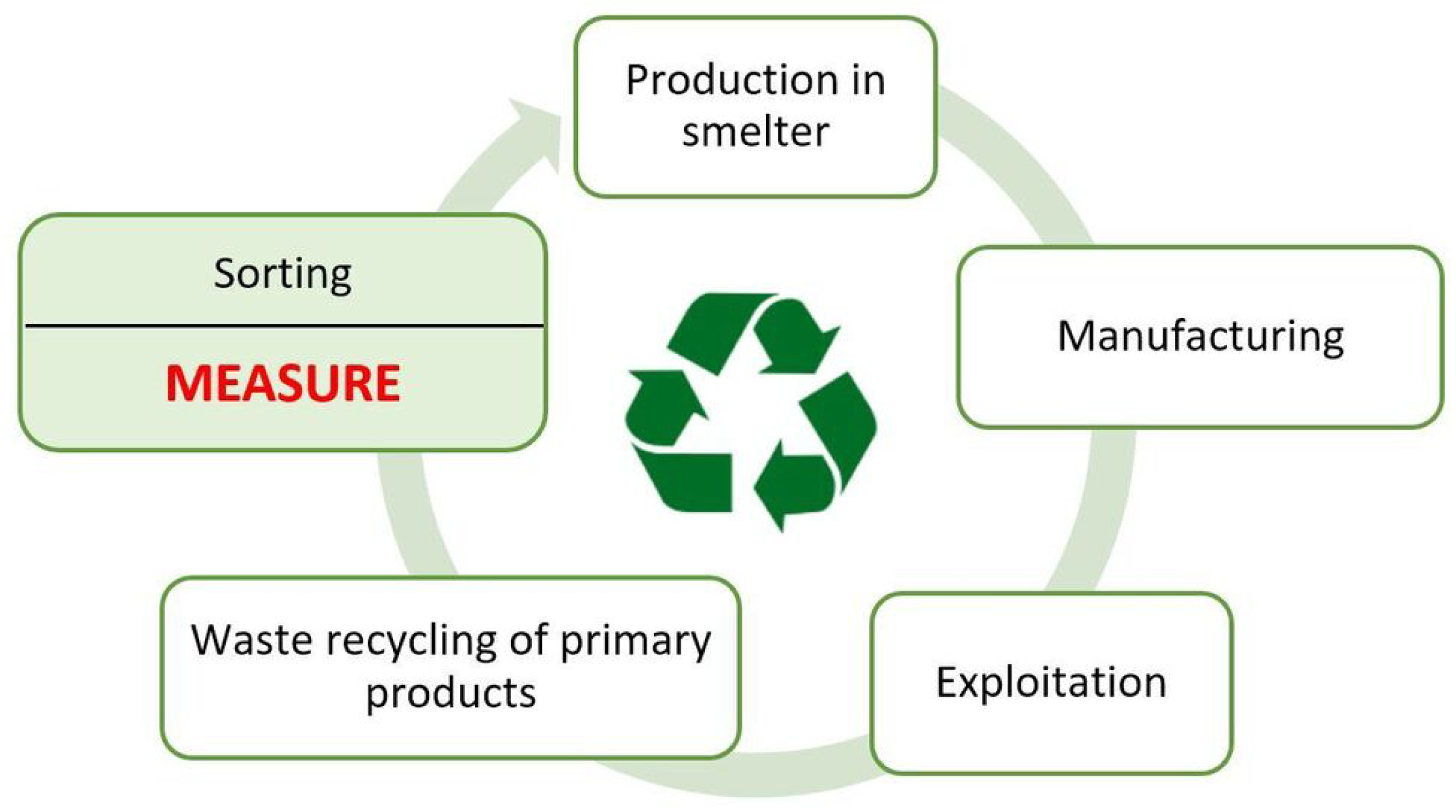

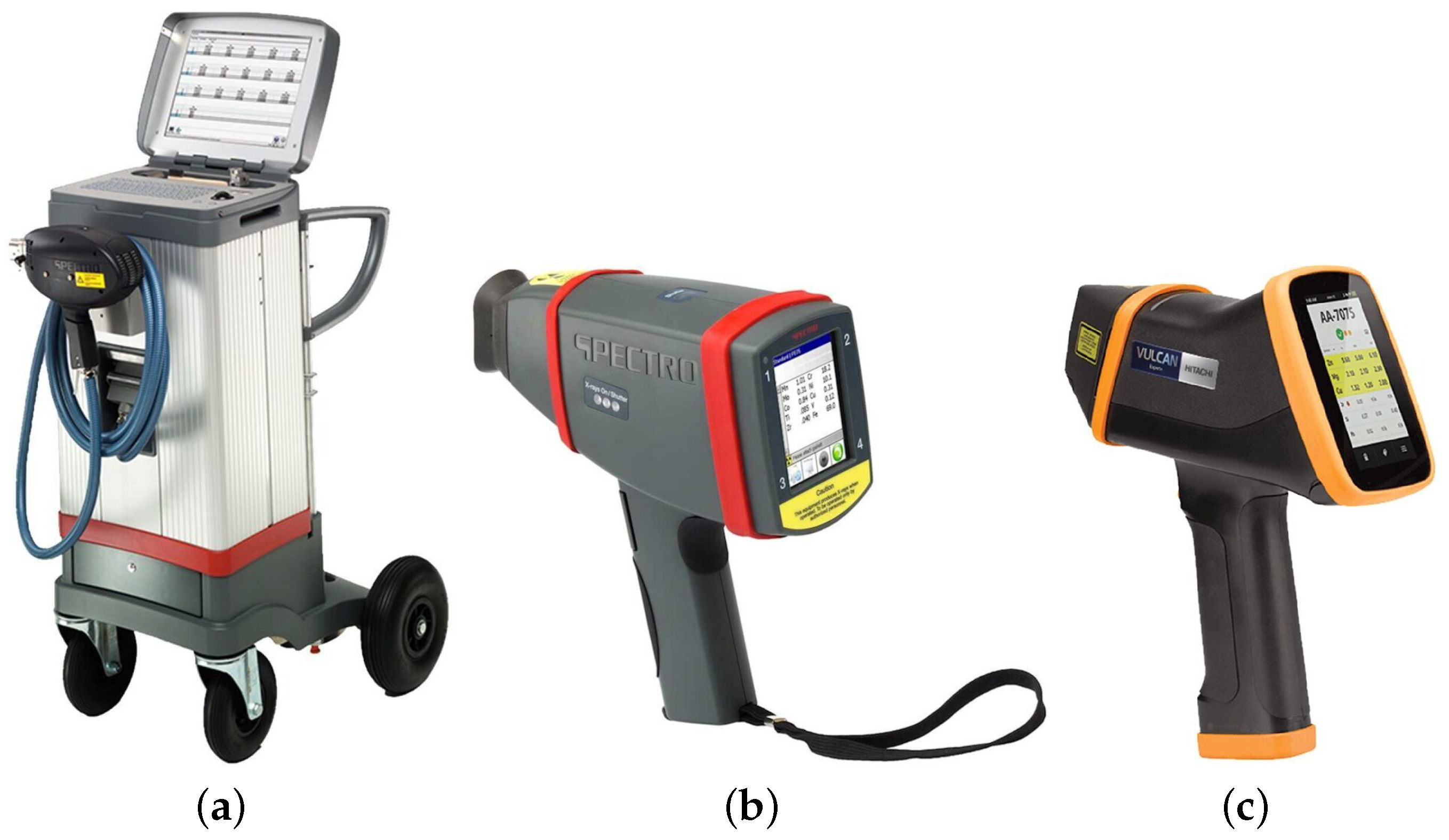
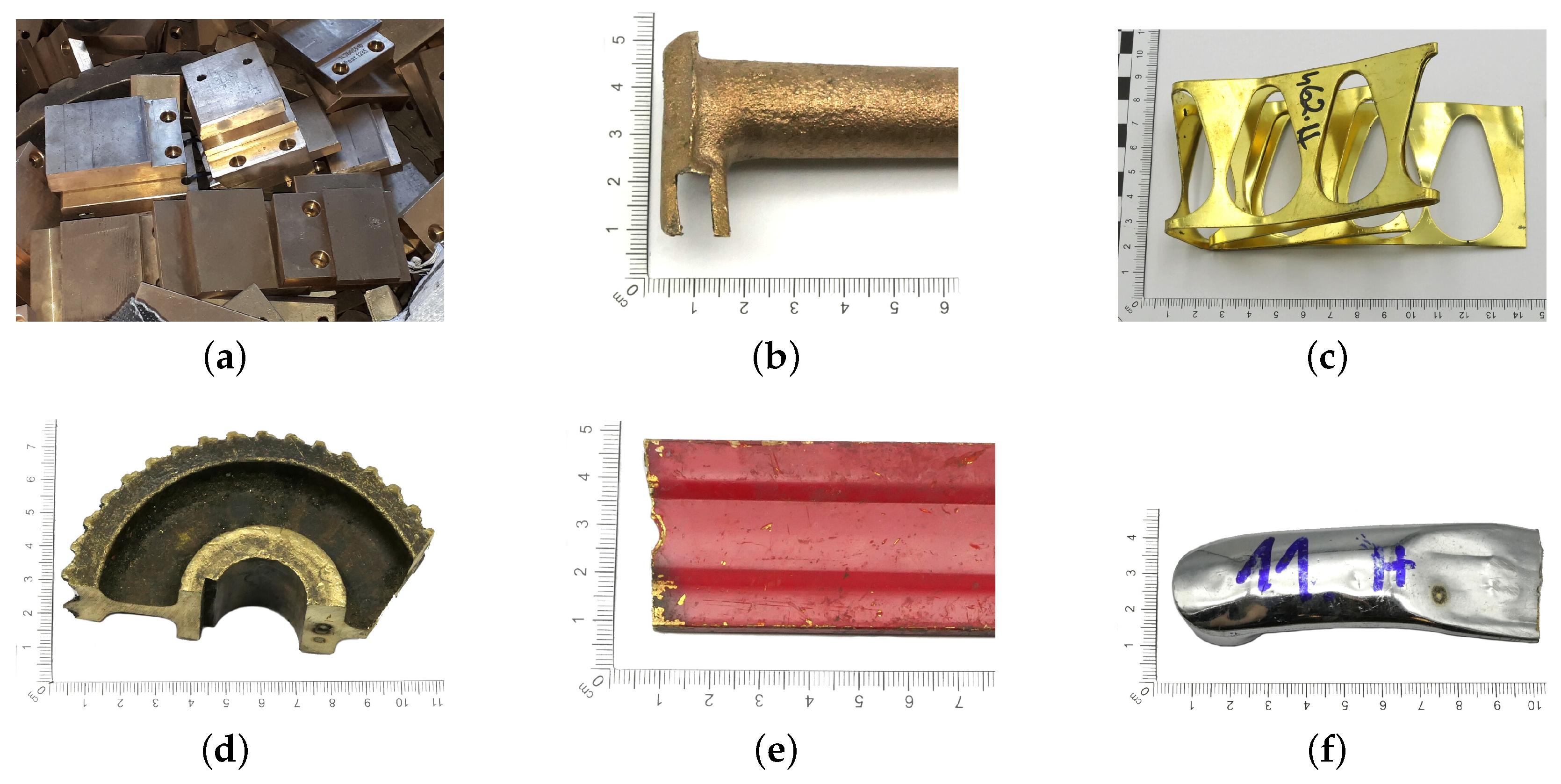



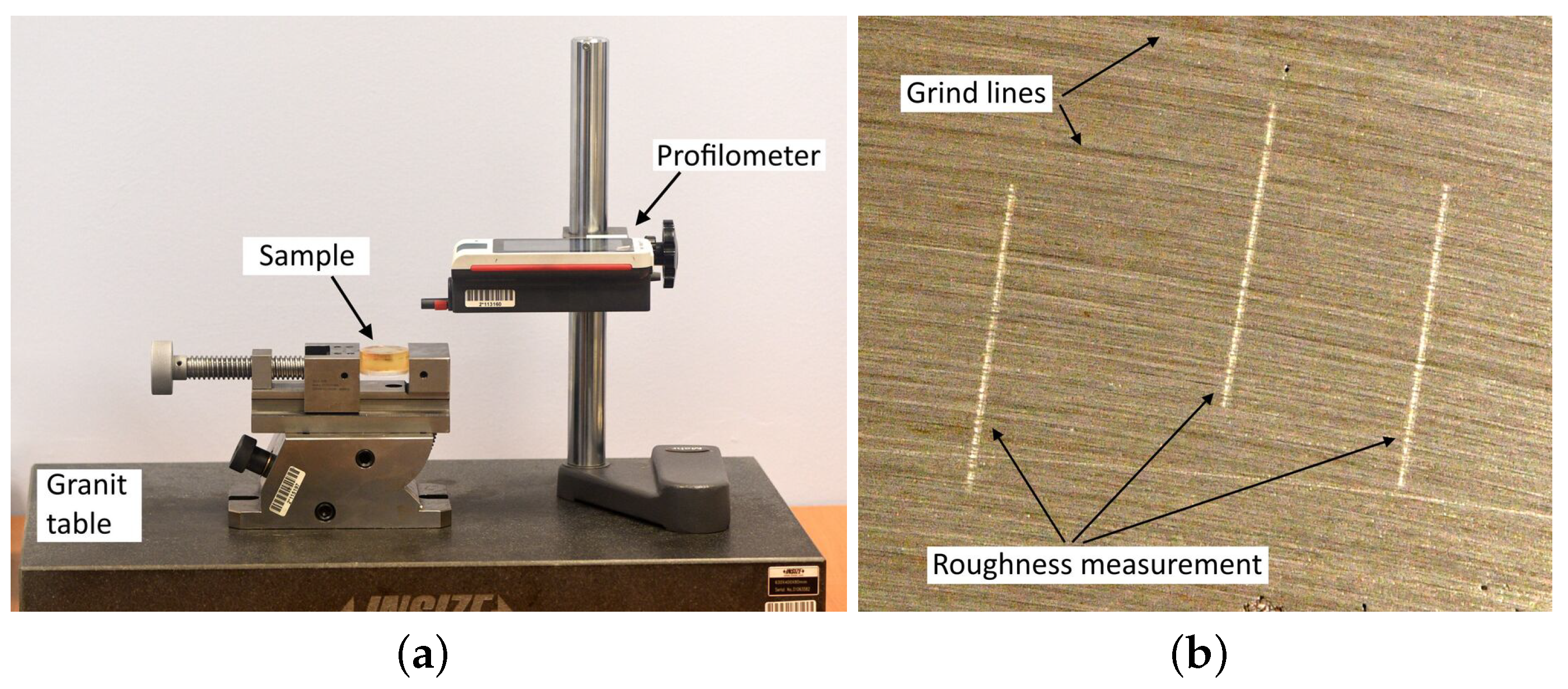
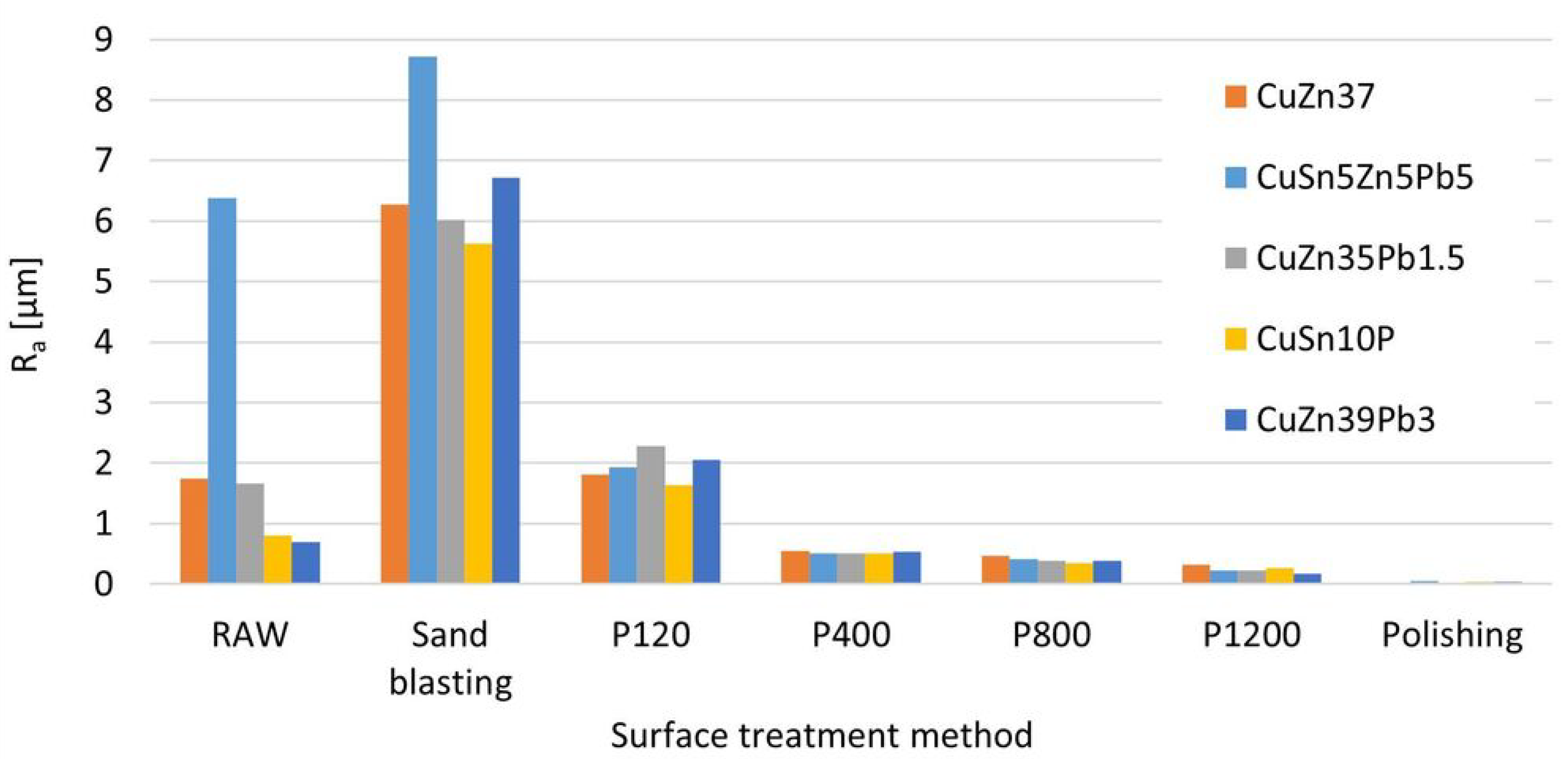

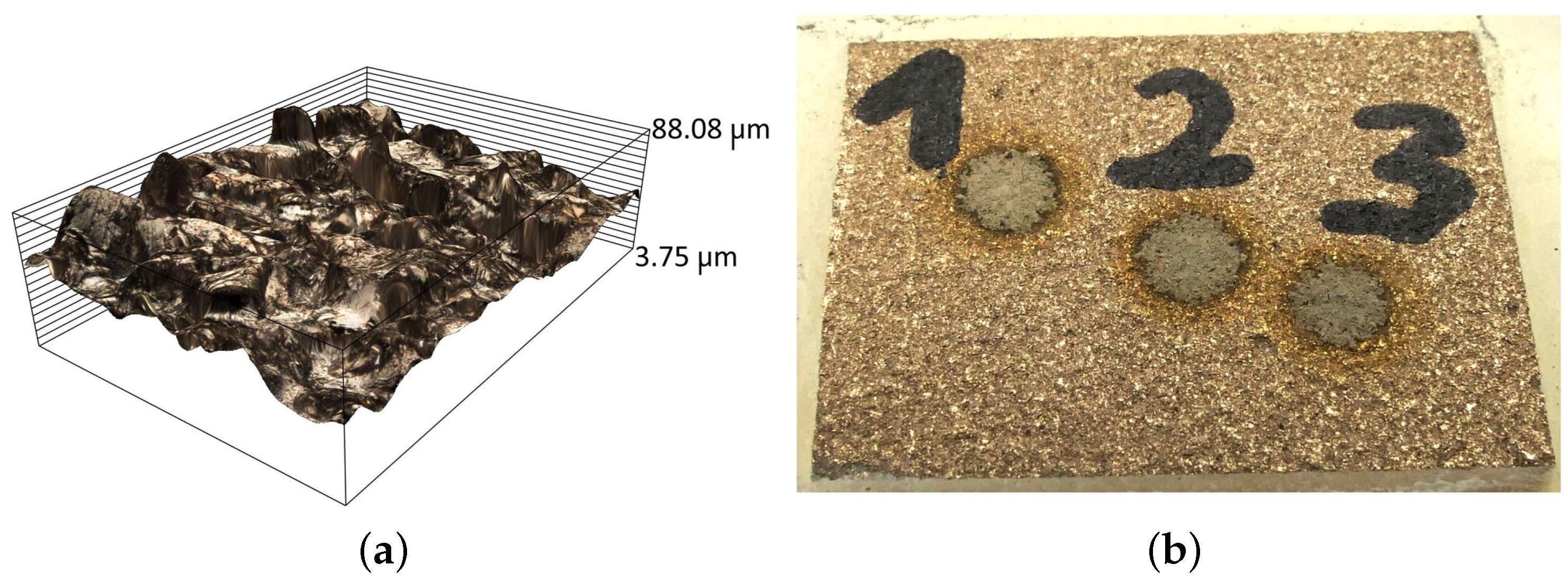
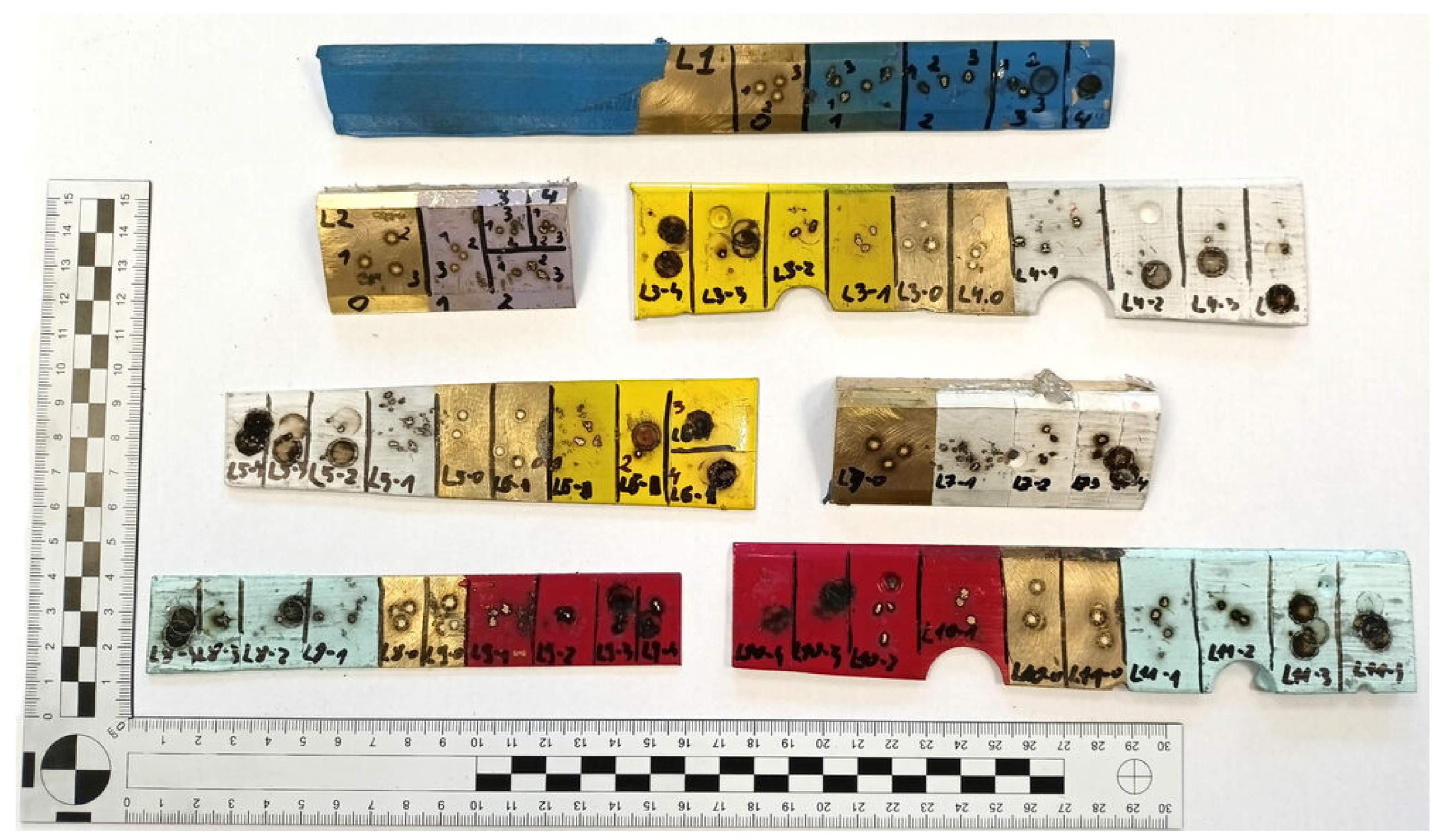
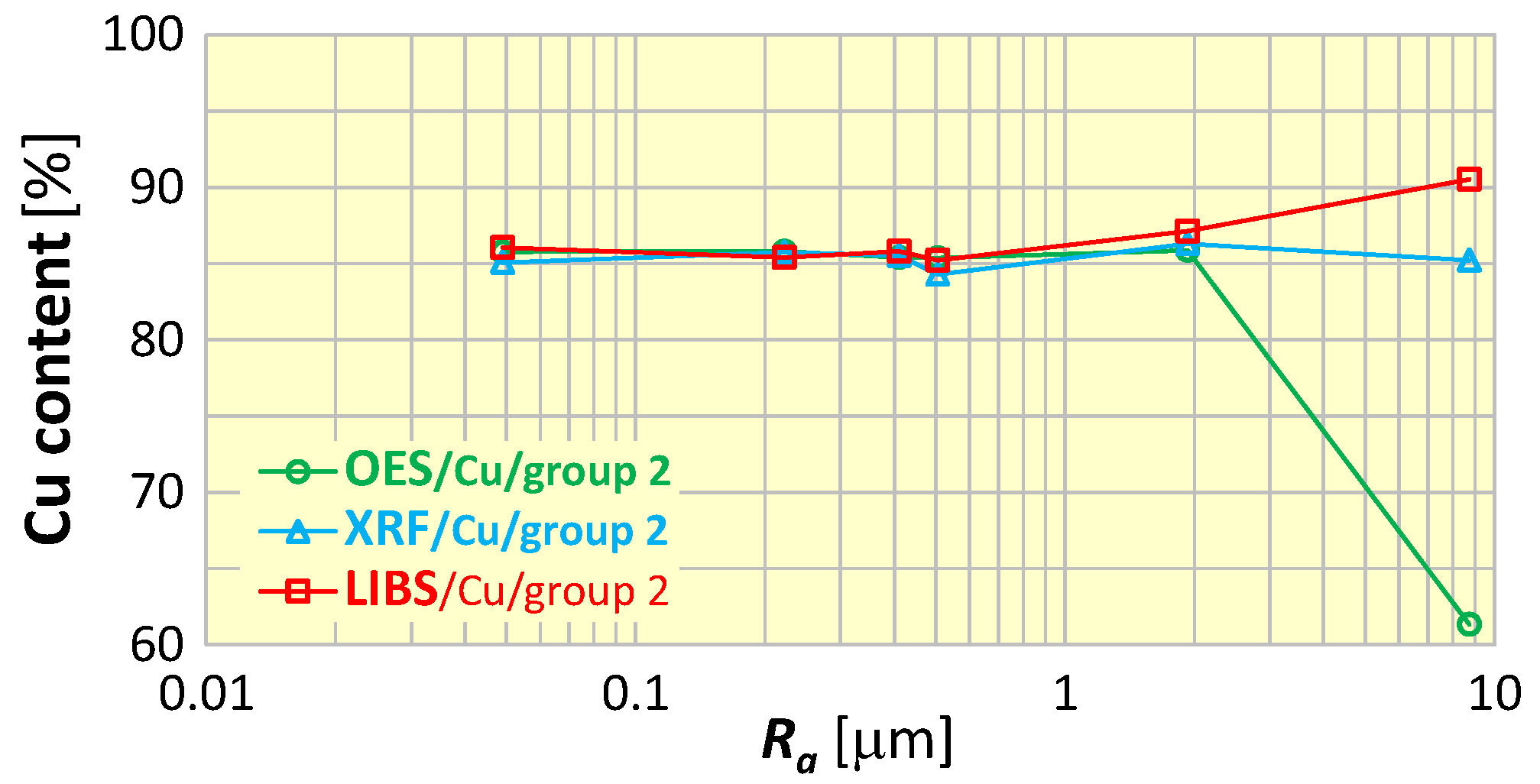

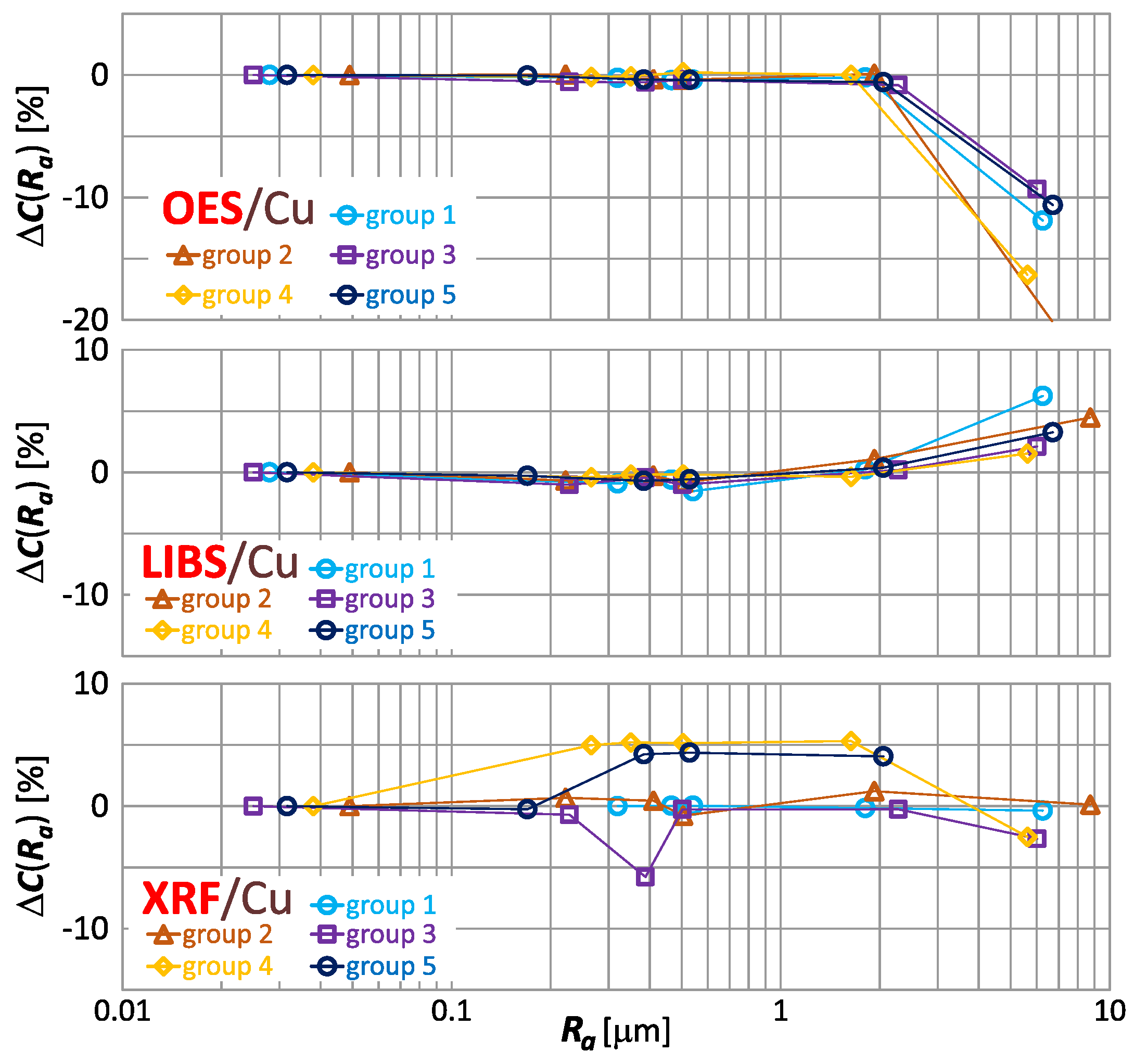
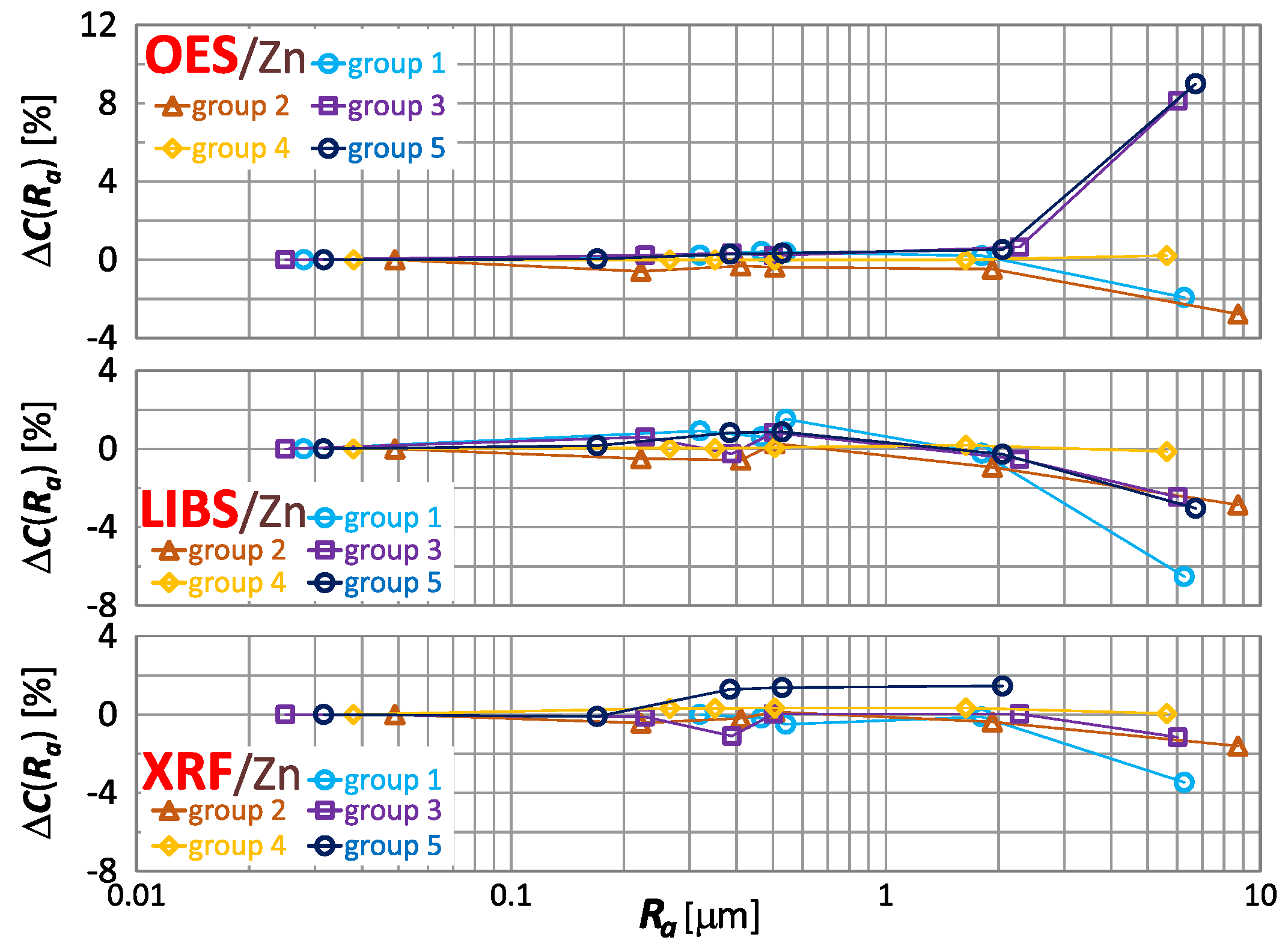

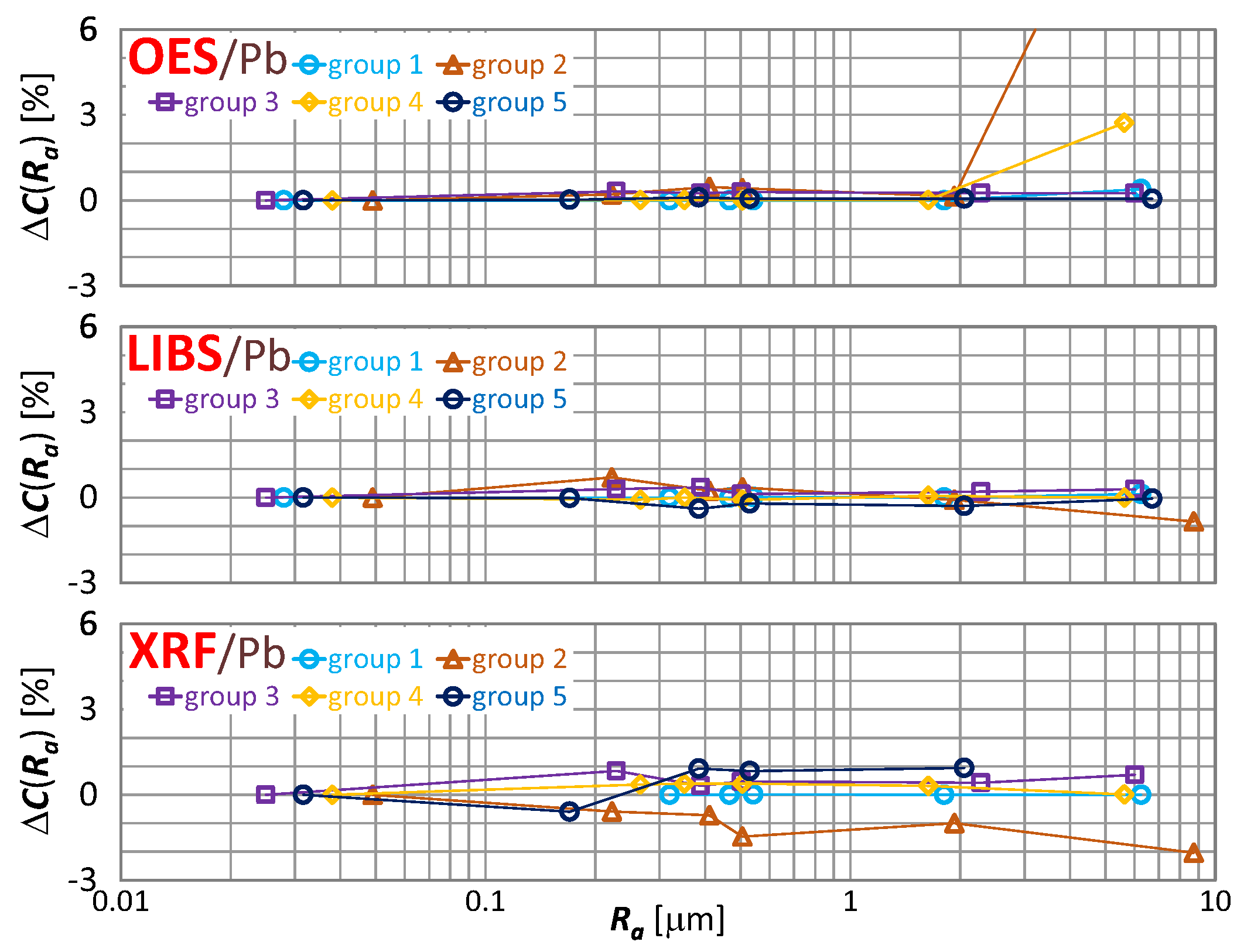

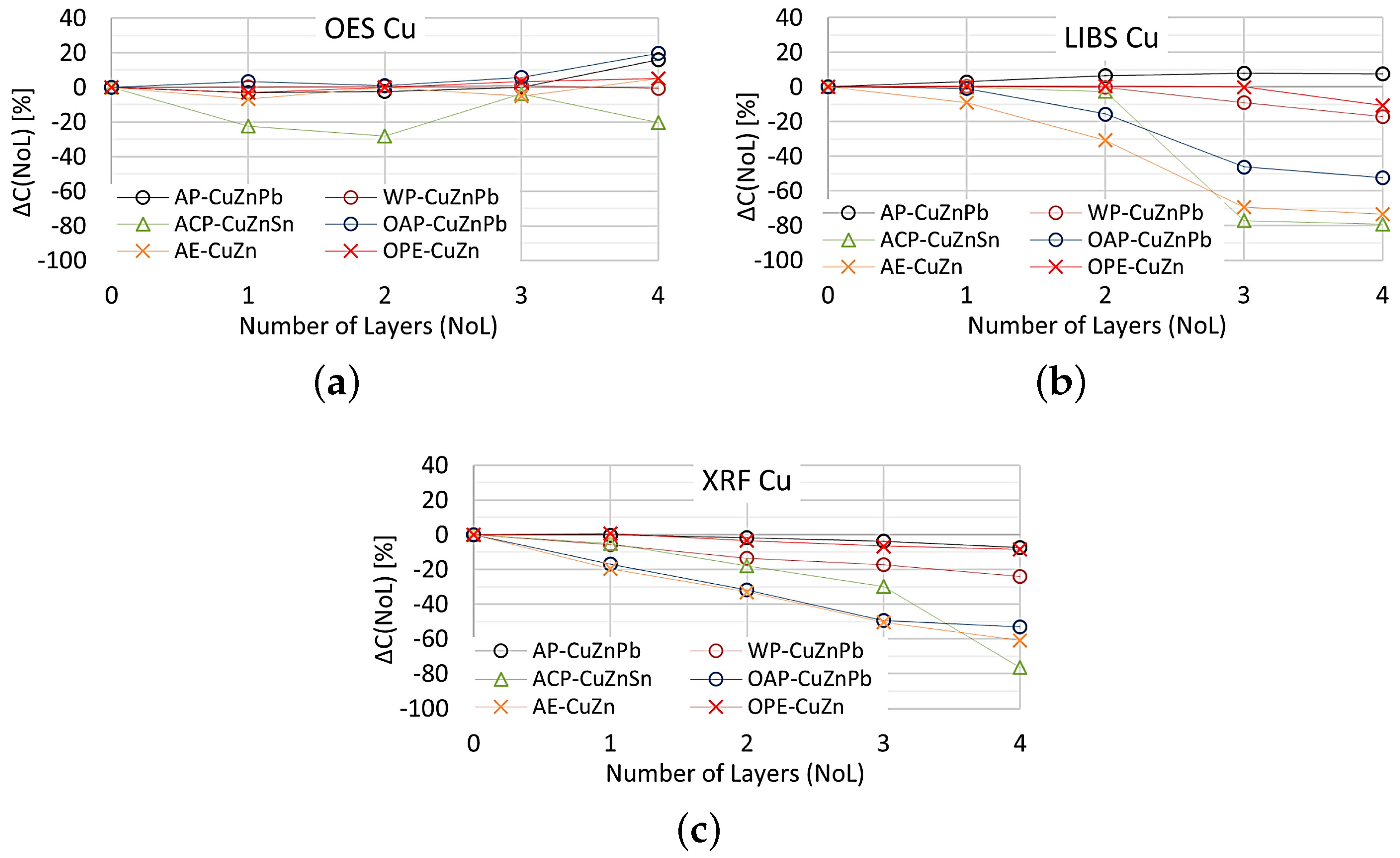


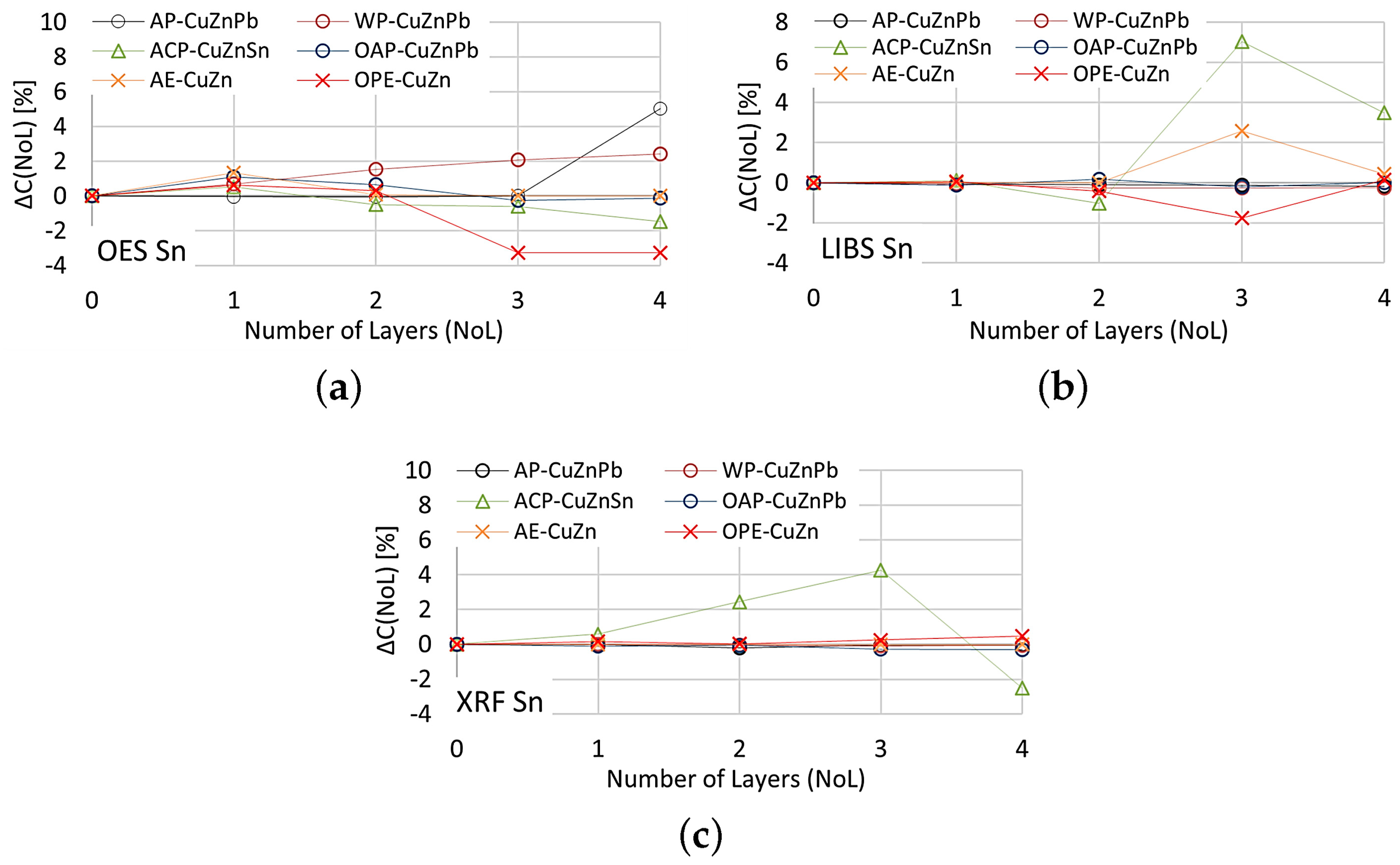
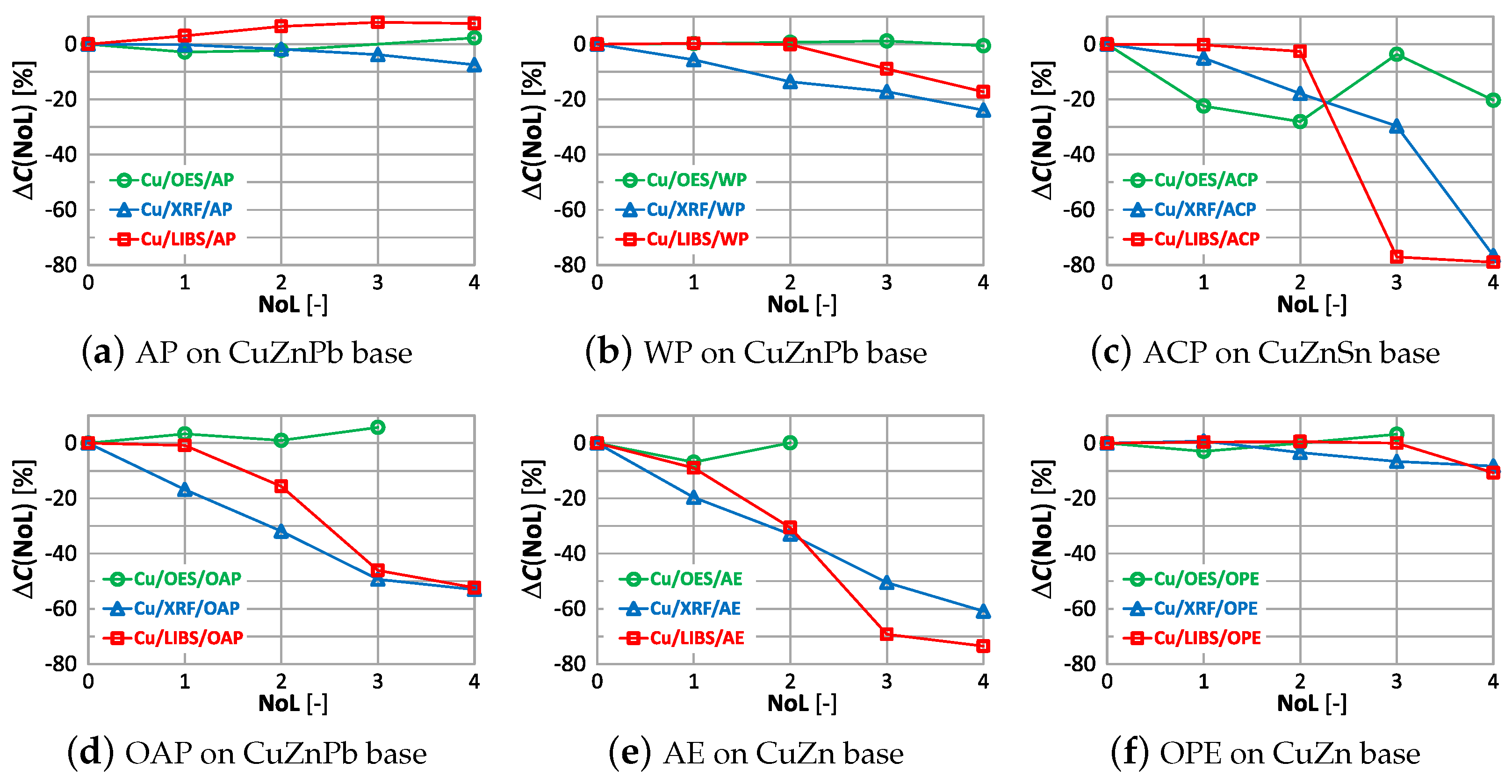
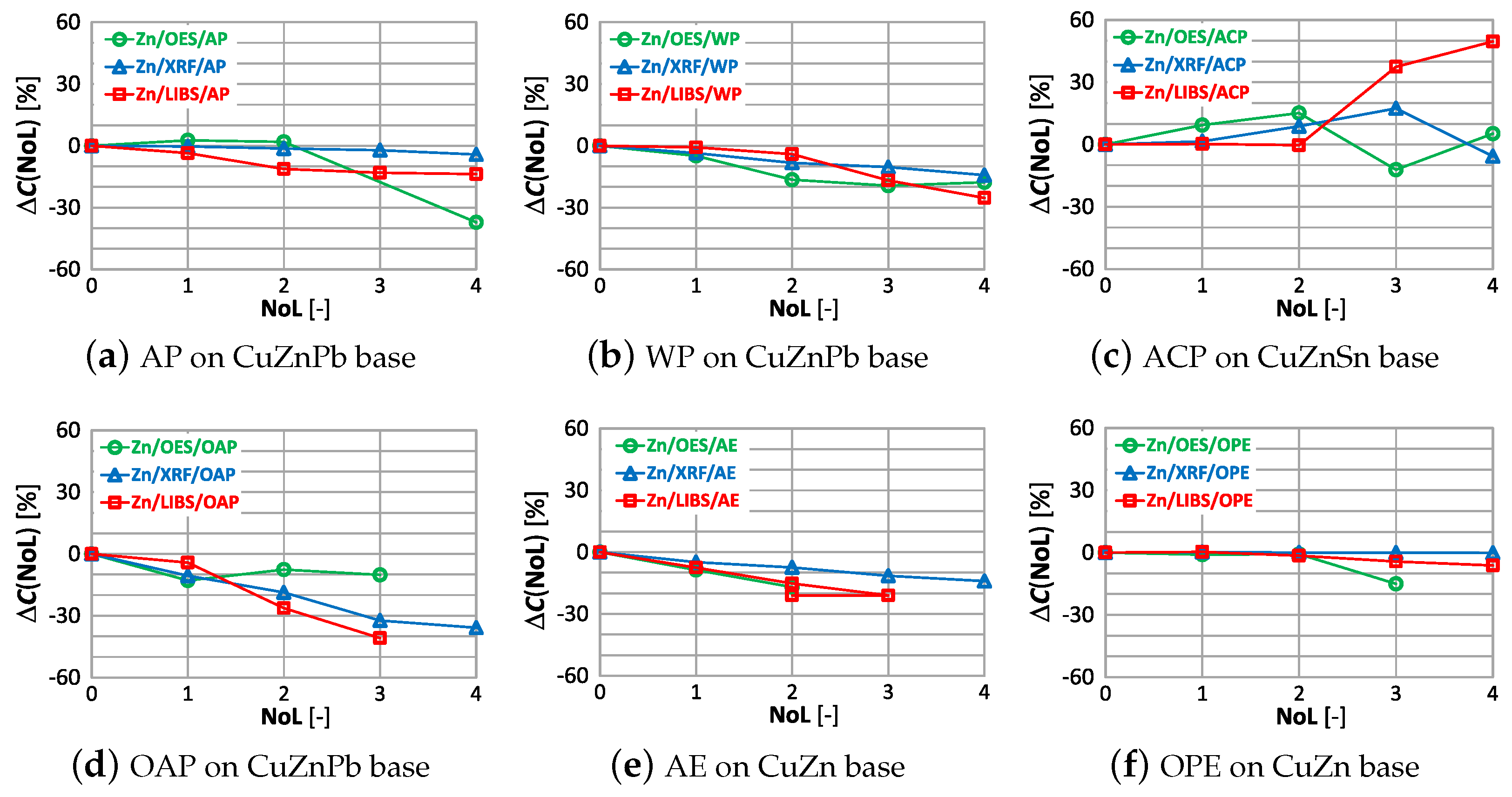
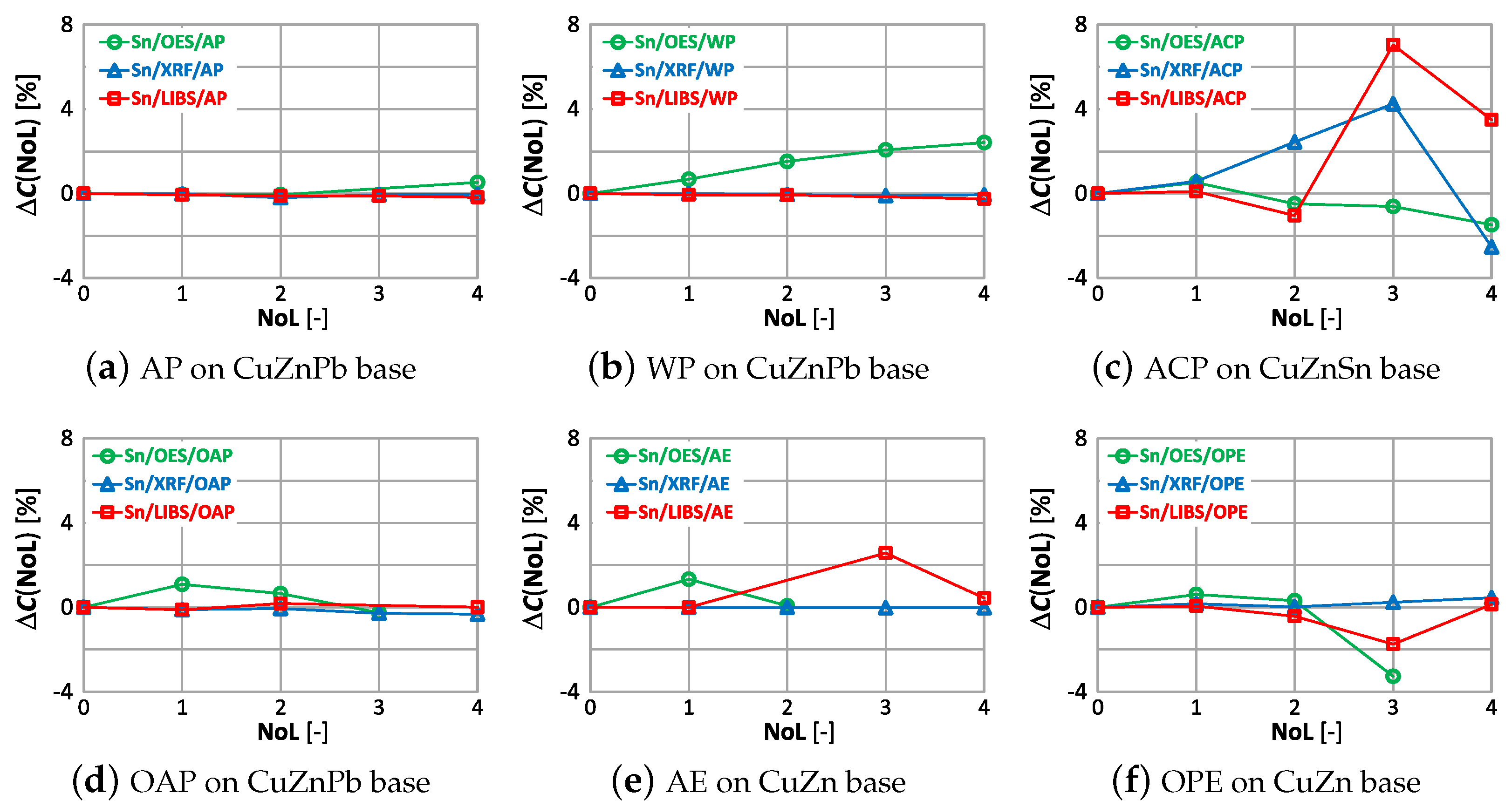

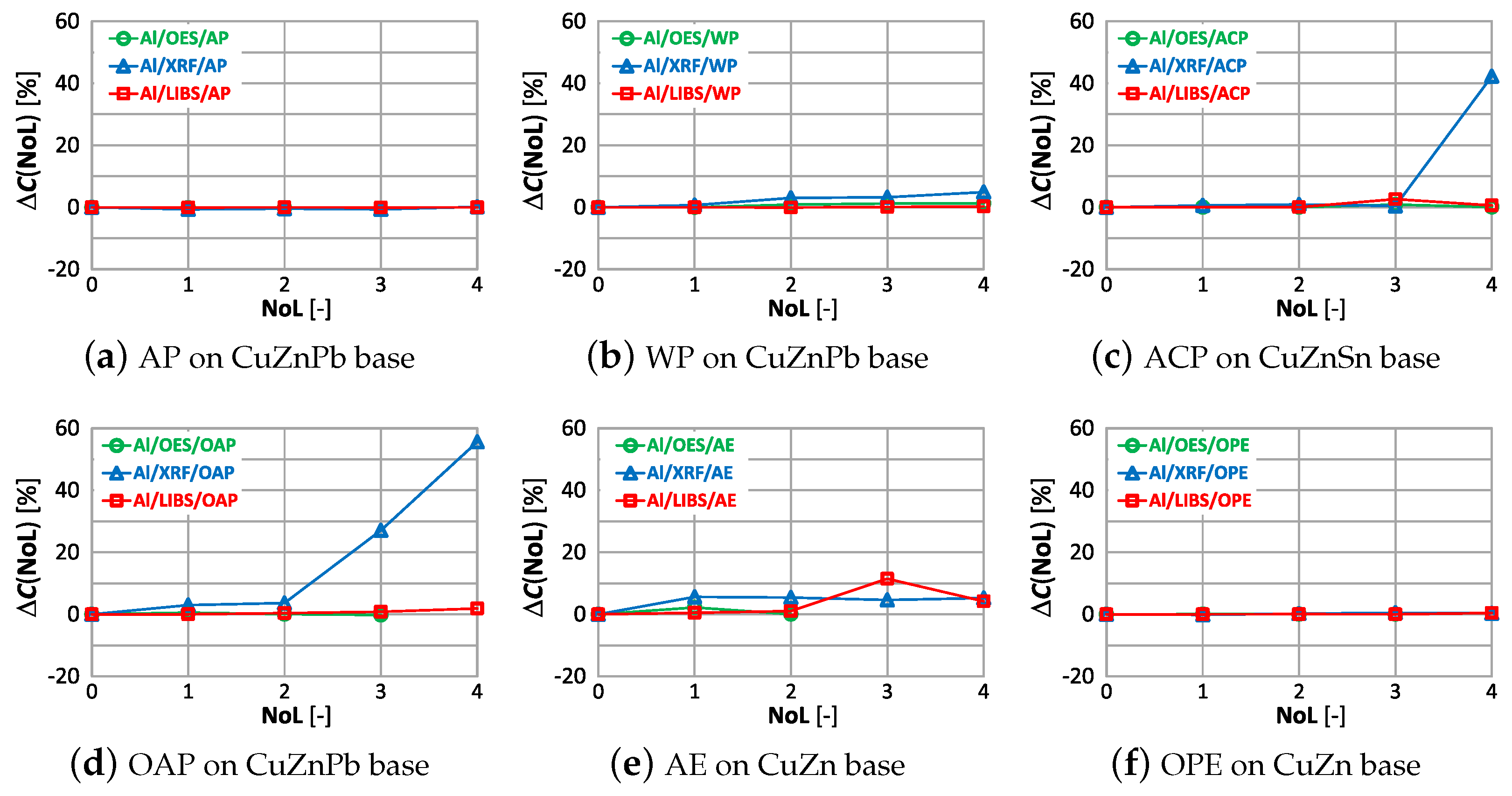


| Method of Measurement | |||
|---|---|---|---|
| OES | XRF | LIBS | |
| advantages |
|
|
|
| disadvantages |
|
|
|
| Group Number | Photo | Alloy Type | Manufacturing Process |
|---|---|---|---|
| 1 |  | CuZn37 | plastic forming |
| 2 | 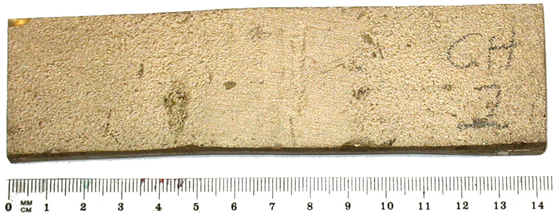 | CuSn5Zn5Pb5 | casting |
| 3 | 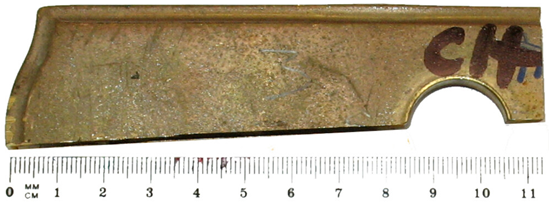 | CuZn35Pb1.5 | casting |
| 4 |  | CuSn10P | plastic forming |
| 5 |  | CuZn39Pb3 | plastic forming |
| Alloy | Cu | Zn | Sn | Pb | Al | Fe | Si |
|---|---|---|---|---|---|---|---|
| CuZn37 | 62.3 | 37.5 | 0.01 | 0.02 | 0 | 0.01 | 0 |
| CuSn5Zn5Pb5 | 85.8 | 4.2 | 4.67 | 5.06 | 0 | 0.05 | 0 |
| CuZn35Pb1.5 | 62.4 | 34.6 | 0.28 | 1.51 | 0.33 | 0.17 | 0.47 |
| CuSn10P | 88.7 | 0.4 | 9.37 | 0.43 | 0 | 0.14 | 0 |
| CuZn39Pb3 | 58.2 | 38.2 | 0.19 | 3.15 | 0 | 0.12 | 0 |
| Type of Grinding | Macro (the Whole Sample) | Micro Structure |
|---|---|---|
| P120 |  |  |
| P400 | 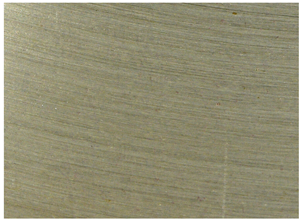 | 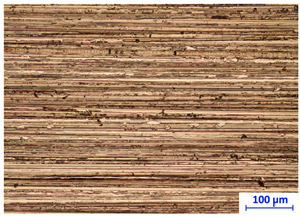 |
| P800 | 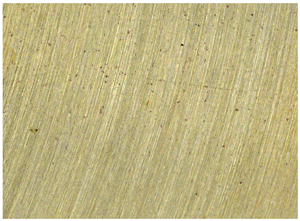 | 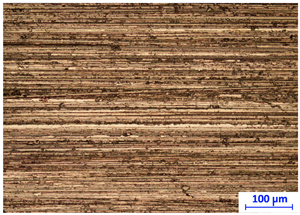 |
| P1200 |  |  |
| Polishing | 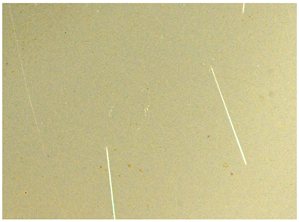 | 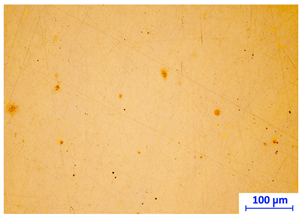 |
| OES | LIBS | XRF | ||
|---|---|---|---|---|
| Element | Dominant Trend of Spectrometer Result Changes with Increasing Roughness | Notes | ||
| Copper | decreasing | increasing | difficult to determine | Figure 14 and Figure 15 |
| Zinc | depending on the alloy (increasing or unchanged, decreasing) | decreasing | decreasing | Figure 16 |
| Tin | depending on the alloy (increasing or unchanged) | depending on the alloy (unchanged or decreasing) | difficult to determine | Figure 17 |
| Lead | depending on the alloy (increasing or unchanged) | difficult to determine | depending on the alloy (unchanged or decreasing)—increased variability | Figure 18 |
| Silicon | increasing | unchanged | increasing related to increased variability | Figure 19/Si |
| Aluminium | slight increase | unchanged | increasing related to substantially increased variability | Figure 19/Al |
| Iron | slight increase | unchanged | increasing related to variability | Figure 19/Fe |
Disclaimer/Publisher’s Note: The statements, opinions and data contained in all publications are solely those of the individual author(s) and contributor(s) and not of MDPI and/or the editor(s). MDPI and/or the editor(s) disclaim responsibility for any injury to people or property resulting from any ideas, methods, instructions or products referred to in the content. |
© 2024 by the authors. Licensee MDPI, Basel, Switzerland. This article is an open access article distributed under the terms and conditions of the Creative Commons Attribution (CC BY) license (https://creativecommons.org/licenses/by/4.0/).
Share and Cite
Bernat, Ł.; Jurtsch, T.; Moryson, G.; Moryson, J.; Wiczyński, G. Effect of Surface Condition on the Results of Chemical Composition Measurements of Scrap Copper Alloys. Recycling 2024, 9, 14. https://doi.org/10.3390/recycling9010014
Bernat Ł, Jurtsch T, Moryson G, Moryson J, Wiczyński G. Effect of Surface Condition on the Results of Chemical Composition Measurements of Scrap Copper Alloys. Recycling. 2024; 9(1):14. https://doi.org/10.3390/recycling9010014
Chicago/Turabian StyleBernat, Łukasz, Tomasz Jurtsch, Grzegorz Moryson, Jan Moryson, and Grzegorz Wiczyński. 2024. "Effect of Surface Condition on the Results of Chemical Composition Measurements of Scrap Copper Alloys" Recycling 9, no. 1: 14. https://doi.org/10.3390/recycling9010014





